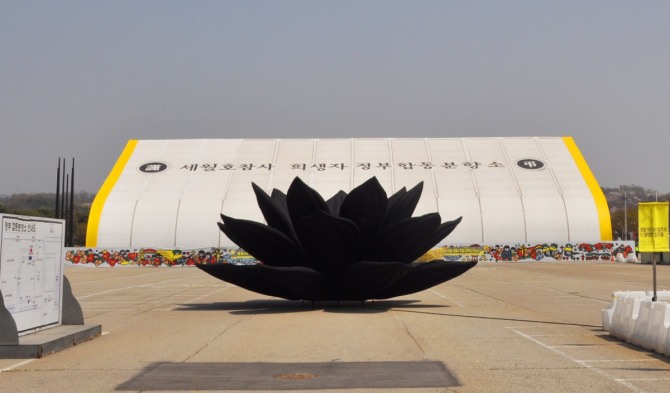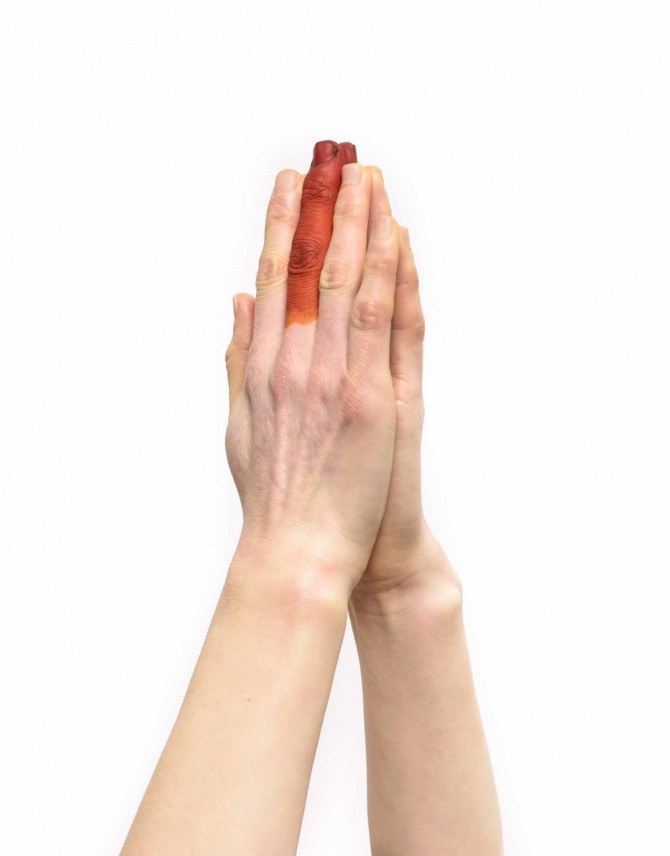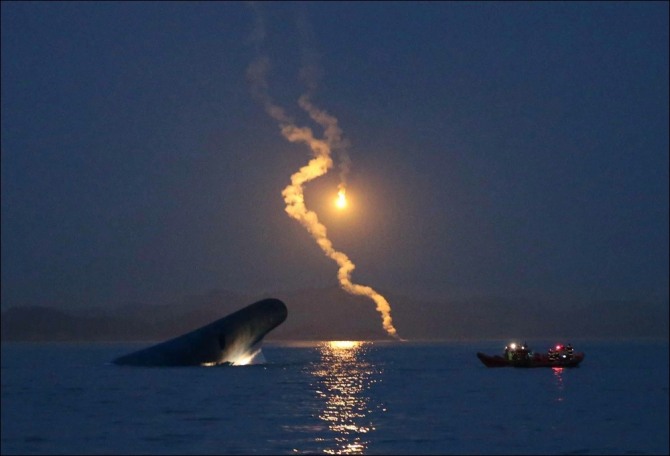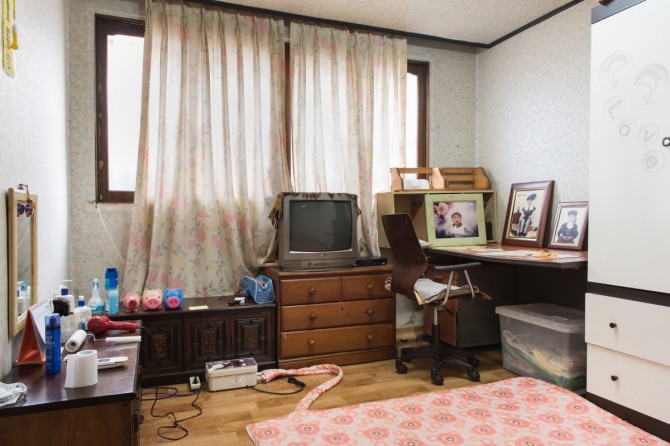Home > Feature
Artists commemorate victims of Sewol tragedy
 |
| “Breathing Flower” by Choi Jeong-hwa (Gyeonggi Museum of Modern Art) |
But the disaster remains vivid in the memories of the victims’ families who still frequently visit the Government Joint Memorial site in Hwarang Recreation Park in Ansan, a Gyeonggi Province city where Danwon High School, whose students made up the largest group of victims, is located. Of the 304 victims, 250 students and 11 teachers from the school were on a school trip to Jejudo Island.
Protests demanding a thorough investigation into yet unresolved issues related to the sinking and the salvaging of the sunken ferry are still held daily in downtown Seoul.
Recently, artist Choi Jeong-hwa installed a black lotus blossom installation piece in front of the memorial site in Ansan in tribute to the victims. The lotus installation, part of his signature work series, was made in black as a reminder of the accident and its impact on the lives of many Koreans.
The somber work is part of the Gyeonggi Museum of Modern Art exhibition marking the second anniversary of the Sewol ferry sinking, held from April 16 through June 26. A total of 22 leading artists and artist groups in the contemporary art scene in Korea have come together to bring light to the issue.
 |
| “Bongseonhwa Prayer” by Cho So-hee (Gyeonggi Museum of Modern Art) |
The series that explores sorrow, grief and anger has now become a part of the memorial exhibition for Sewol victims. Participants vary from a 33-month-old baby to a 96-year-old woman.
She dyed the middle fingers of the participants with bongseonhwa flowers, or garden balsam, a plant Korean women have traditionally used to dye their fingernails bright orange. Then she took pictures of their hands in a praying position with their palms pressed together and fingers pointed up.
“The dyed fingers look like aching fingers. There are many kinds of prayers, but I thought one of the most important types of prayers is the one you do to vent your anger and grief,” said Cho.
The Gyeonggi Museum of Modern Art, located just 2 kilometers from the high school in Ansan, was the closest public institution to witness the aftermath of the tragedy -- shock, grief and anger. The Hwarang Recreation Park next to the museum became a memorial site for the victims, set up by the Korean government. Several rooms of the museum were used to assist victims’ families and as press rooms.
 |
| A photo taken on April 16, 2014 by photojournalist Kim Bong-gyu shows the Sewol ferry sinking off Donggeochado Island. (416 Memory Storage) |
Choi added that Kassel Documenta, the modern and contemporary art event held every five years in Kassel, Germany, was founded based on the need to address conflicts and issues that emerged after World War II, and the Sewol ferry disaster can be an event that draws many artists to reflect on the accident and to remind Korean citizens of the valuable lessons learned.
“This is to ask what the role of art in society is,” she noted.
Throughout the exhibition, artist Ahn Kyu-chul will have citizen volunteers read books from a reading list for people in their 20s -- books that student victims would have read if they were alive.
 |
| “Children‘s Room” by Ju Yong-seong (Gyeonggi Museum of Modern Art) |
A photograph series that captured the empty rooms of student victims and their belongings are also on display at the exhibition. For more information, visit gmoma.ggcf.kr.
More photographs that have documented various scenes related to the accident are also on touring exhibitions in Ansan in Gyeonggi Province, Seoul and Jejudo Island until Sept. 3. The exhibition “Two Years, 24 Months” features photographs of Sewol disaster-related incidents and events over the last two years taken by three photographers, including 2014 artist of the year award winner Noh Sun-tag. For more information, visit www.416memory.org.
By Lee Woo-young (wylee@heraldcorp.com)




























